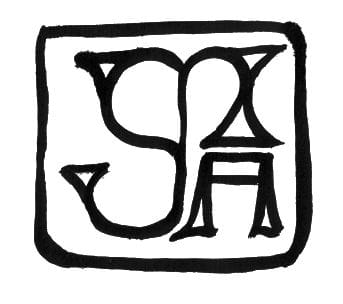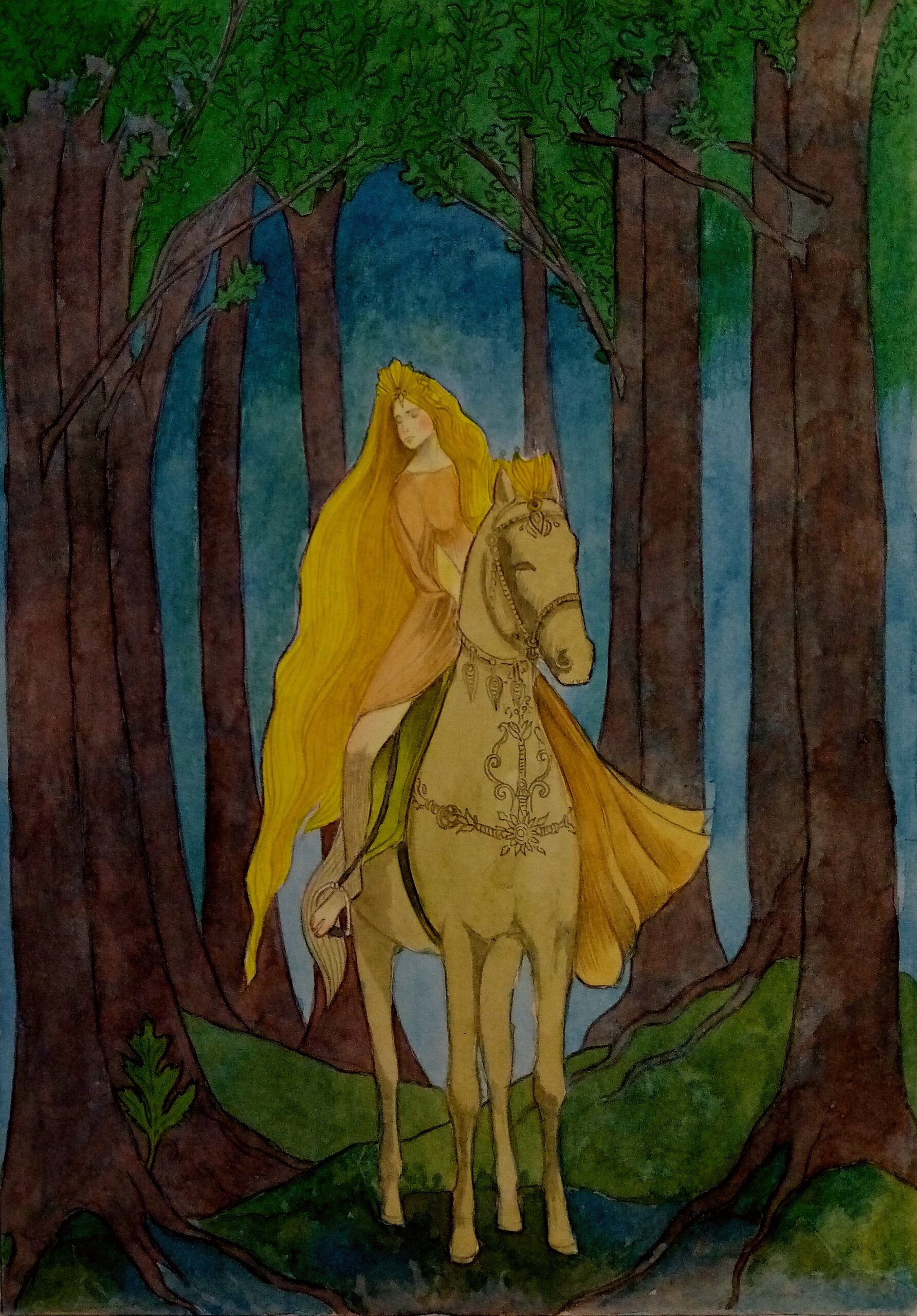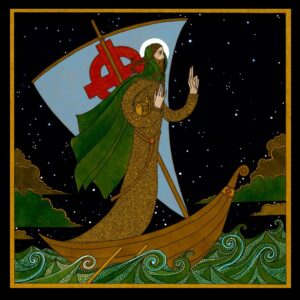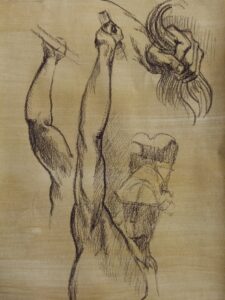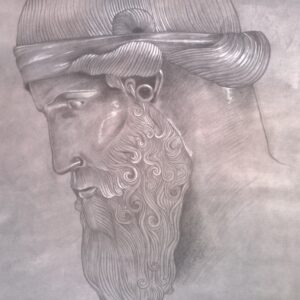Niamh of the Golden Hair (Niamh Cinn-Óir)
Niamh is most famously known as Niamh Cinn-Óir (Niamh of the Golden Hair). She is a princess of the Otherworld, specifically of Tír na nÓg (The Land of Youth), one of the most beautiful and mystical realms in Celtic mythology. Tír na nÓg is a place where time stands still, there is no sickness or death, and eternal happiness and beauty reign.
2. The Central Myth: Oisín and the Journey to Tír na nÓg
Her story is inextricably linked with the mortal hero Oisín (pronounced “Uh-sheen”), the greatest poet of the Fianna and the son of the legendary warrior Fionn mac Cumhaill.
The classic tale unfolds as follows:
- The Arrival: Niamh emerges from the waves on a magnificent white horse, her beauty and radiance stunning the Fianna who are feasting on the shore.
- The Proposal: She has come to the mortal world specifically to seek out Oisín, having heard of his fame and valor. She asks him to return with her to Tír na nÓg, describing it as a land of eternal youth and joy.
- The Journey: Enchanted by her beauty and her description of the Otherworld, Oisín climbs onto the horse behind her, and they gallop across the sea to Tír na nÓg.
- Life in the Otherworld: There, they live happily together as husband and wife for what feels to Oisín like three weeks. They have children, including a daughter, Plor na mBan (Flower of Women).
- The Longing for Home: Eventually, a homesickness for Ireland and his father, Fionn, overcomes Oisín. He asks Niamh if he can return for a brief visit.
- The Warning and the Gift: Niamh reluctantly agrees but gives him a stern warning: he must not dismount from the magical white horse and let his feet touch the soil of mortal Ireland. If he does, the centuries he evaded in Tír na nÓg will catch up to him instantly.
- The Tragedy: Upon returning, Oisín finds that 300 years have passed in Ireland. The Fianna are long dead, and their tales are now ancient legends. While trying to help some men move a heavy stone, his girth breaks, and he falls from the saddle. The moment he touches the ground, he instantly transforms from a young man into an ancient, withered old man.
- The Aftermath: He is found by the later inhabitants, including St. Patrick, to whom he recounts the stories of the Fianna before dying of old age.
3. Characteristics and Significance
- Otherworldly Beauty: Niamh is the epitome of supernatural beauty and grace. She is not a warrior queen like Medb or a vengeful spirit like the Morrígan; she is a gentle, loving, and benevolent figure.
- The Allure and Danger of the Otherworld: Her story is a classic “faerie mistress” tale that illustrates the dual nature of the Irish Otherworld (Aos Sí). It is a place of incredible beauty and reward but is also perilous and separate from the mortal realm. Contact with it often comes with a cost, as Oisín tragically discovers.
- Love and Loss: At its heart, her story is a tragic romance. She represents a perfect, timeless love that is ultimately shattered by the immutable laws of nature and time.
4. Other Mentions
While the story of Oisín is her most famous, Niamh is also sometimes mentioned as a daughter of the sea god Manannán mac Lir, or as the wife of Conall Gulban in some lesser-known tales. However, these are overshadowed by her primary role as the queen of Tír na nÓg who loved Oisín.
In summary, Niamh is the radiant, tragic queen of the Land of Youth whose love for a mortal hero serves as a powerful warning about the irresistible yet dangerous allure of the Otherworld. Her story remains one of the most poignant and enduring myths in all of Irish literature.
